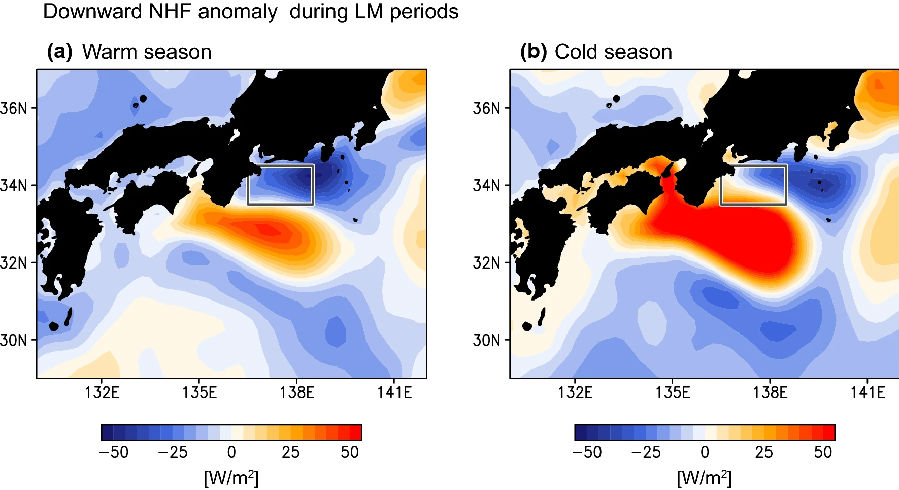Shusaku Sugimoto, Bo Qiu & Atsushi Kojima
Published in Journal of Oceanography, 29 October 2019
The Kuroshio takes a large meander (LM) path since summerof 2017 for the first time since the 2004–2005 event and is the sixth LM eventsince 1965. It has been commonly recognized that a cool water pool isdistributed broadly in the inshore region between the Kuroshio and southern coast of the Tokai district, Japan, during the LM periods. By using therecently-developed 1-km high-resolution sea surface temperature data, here weshow marked coastal warming off the Tokai district during the LM periods,despite the Kuroshio not passing through the coastal area. The archivedtemperature-salinity profiles reveal that large positive anomalies off the Tokai district exist not only at the sea surface but also below 300 m and thewater properties of which are those of the offshore Kuroshio water. The warm,salty waters are transported inshore by the westward Kuroshio which bifurcates at around 138° E, 34° N, during the LM path periods. We detect an increasedupward heat release via turbulent heat fluxes along the coastal warming regionfrom the new-generation atmosphere reanalysis data on a 25 km grid. These arecommon features to the past LMs and, furthermore, the region around the Kanto-Tokai districts becomes warmer than usual in warm seasons during the LM events. Our result reveals that the LM event can exert an influence upon the Japanese climate via the coastal air-sea interaction.

Fig. As in Fig. 2b, but fordownward NHF anomaly in a warm season (May–October) and b cold season(November–April). Black rectangle represents CAT
Sugimoto, S., Qiu, B. & Kojima, A.Marked coastal warming off Tokai attributable to Kuroshio large meander. JOceanogr 76, 141–154 (2020). https://doi.org/10.1007/s10872-019-00531-8